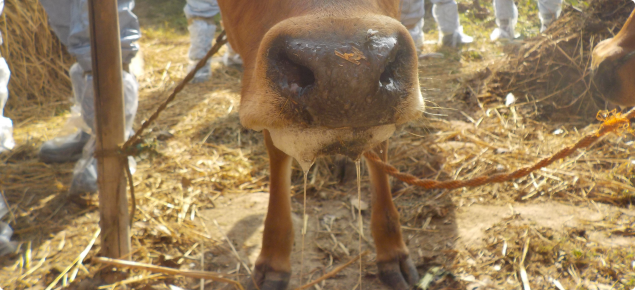116.WHAT IS HOOF-AND-MOUTH DISEASE?
If you live on a farm or have anything to do with cattle, then you’ve probably heard people talk about this disease, also called foot-and mouth disease. It is a highly contagious disease that affects practically all cloven-footed animals.
When an animal gets this disease, it develops blisters on the tongue and lips and around the mouth, on parts of the body where the skin is thin, and between the claws of the feet.
The disease appears suddenly and spreads very quickly. It causes tremendous losses among cattle. If the disease strikes in a serious form, it may kill off as many as 50% of the animals that catch it! And even those animals that do survive are in great trouble. They lose a great deal of weight because they cannot eat. Cows have their milk cut down considerably.
The horse, by the way, does not catch hoof-and-mouth disease. This helps in diagnosing the disease. Suppose, for example, that on a farm the horses, the cows, and the swine all develop fever. Then we know it is not hoof-and-mouth disease. But if the others develop fever and the horses don’t, then we know it is this disease.
This disease is caused by a virus that presents quite a problem. For one thing, it is the smallest virus known. The virus that causes smallpox, just to give you an idea, is 10,000 times larger! Another problem is that this virus can resist being destroyed if the conditions are right. It can remain active in hay for 30 days. It can remain active for 76 days at freezing temperature! And it can resist a great many antiseptics.
Still another complication is that there are six types of virus that cause hoof-and-mouth disease. So if an animal develops an immunity to one of these viruses, it may still get the disease from any of the other five!



Leave a Reply